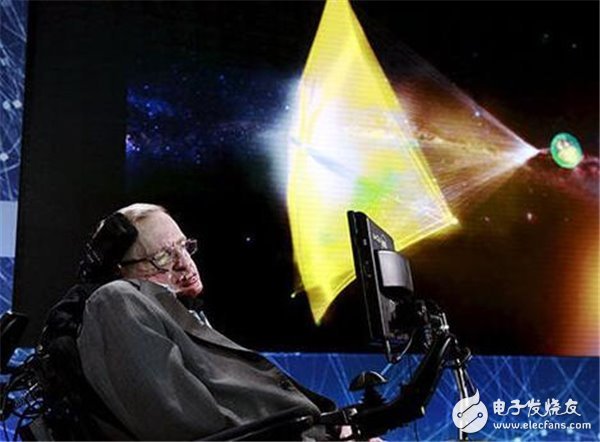The National Aeronautics and Space Administration (NASA) has teamed up with the famous British physicist Stephen Hawking to create a nano-aircraft capable of flying at one-fifth of the speed of light.
At present, relevant research is still in the theoretical stage. There are still many problems to be solved in order to achieve interplanetary flight, and researchers still have a lot of work to do.
Hawking announced in New York on April 12 that he will launch the "Breakthrough Star" program, which will be built in cooperation with Russian businessman Yuri Milner and Facebook socialist Facebook Mark Zuckerberg to fly at one-fifth of the speed. A miniature interplanetary ship to the neighboring star.
According to reports, the planned construction of the nano-aircraft is based on the computer chip "Star". The chip is only two or three centimeters square and weighs a few grams, but integrates cameras, photon thrusters, navigation and transmission components. The chip will be equipped with a super material ponto named "Light Sail", which will be propelled by a high-energy laser launched from the ground. The "Light Sail" can absorb the laser energy and drive the micro-spacecraft forward.

The British "Independent" reported on the 11th that this nano-aircraft will fly to the neighboring star one of the stars closest to the solar system in 20 years.
However, how this miniature interplanetary spacecraft "has passed" 20 years of space flight remains questionable, because the high-energy rays of the universe may cause the spacecraft to fail.
The report said that NASA made three suggestions at an international conference in San Francisco, California last week:
The first is to adjust the route to avoid high-energy radiation zones, but this may result in an increase in the range of flights for several years, and may not necessarily guarantee that the spacecraft will not be damaged;
The second is to add a protective layer on the electronic components, but this will make the spacecraft gain weight and become larger, and the speed will be reduced;
The third is to create a self-healing "star chip" chip.
On-chip repair has been discussed for many, many years. "NASA researcher Han Zhenyu said."
On August 25 this year, a paper in the British journal Nature announced that astronomers discovered that terrestrial planets orbiting neighboring stars, only 4.2 light years from the solar system. This so-called "other earth" is called "near star b". The next day, the Breakthrough Stars program announced that it would target "beyond the neighboring star b" to explore life outside the solar system.
Switching Power Supply, CCTV Switching Power Supply, LED Power Supply,CCTV Camera Power Supply
Chinasky Electronics Co., Ltd. , https://www.chinaskyswitches.com
